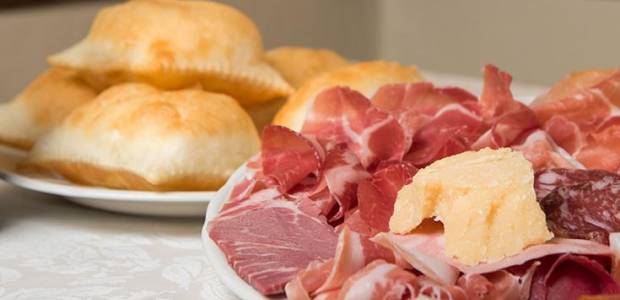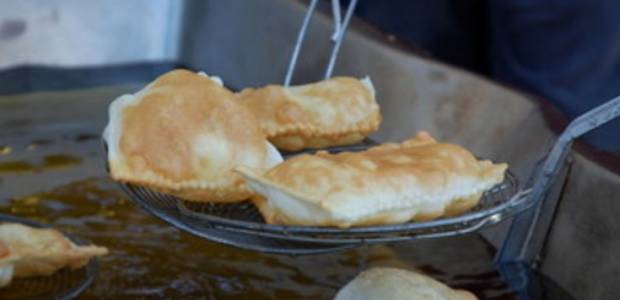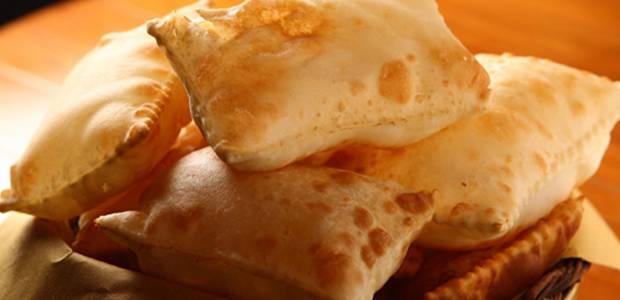Languages
The Fried Cake is fried fast and in lard
Isn't Gnocco Fritto, nor Crescentina, nor Pinzino, and much less Chisulén. For the Parmesans it’s Fried cake. Several times, we have already talked about it.
Now we only remember that it’s a savoury process, street food, present in every fair or event, perfect accompanied with cured meats.
But also excellent, according to tradition, for matches among the most curious: in fact there are people who eat it also sprinkled with sugar or dipped in milk for breakfast.
The origins of this process, based essentially on water and flour, are very ancient and must be research in the gastronomic tradition of the peasant world.
In the Po Valley, the wheat has been cultivated since 3000 years, and cornverted in flour and then mixed with other ingredients, and cooked in various ways (on stone, fried, boiled) is an activity practiced everywhere in different variations.
The first historical reference to a recipe similar to fried cake is found in the cookbook “Li quattro banchetti per le quattro stagioni dell’anno”, written in 1659 by Carlo Nascia, chef at the court of Ranuccio II Farnese, Duke of Parma, where it was called “pasta a vento”.
If the ingredients combine it with bread and pasta, it’s the cooking that makes the fried cake a abundant and delicious dish. In fact, as the name says, it’s fried.
And to do this, it uses the lard, that is the pork fat, which, heated in a pan, becomes liquid and allows the paste to swell and become crispy, light and tasty.
The presence in Emilian food of lard, that’s pork fat, is due to the imprint left by the Lombards, who made a large use of it, having made large quantities available.
On the contrary that you could think, lard is the perfect fat for cooking fried cake as, having a very high point of smoke (around 230°), it can reach high temperature without burning developing toxic substances, and leaving the product lighter and less greasy, thanks to a quick and uniform frying.
Seemingly it may seem like a banal recipe: water, salt and flour to obtain a soft and homogeneous mixture, to be pulled into sheet of a few millimeters of thickness, then to be cut in rhombus and fry.
But in reality this is not so: you have to achieve a perfect balance between the composition of the mixture, its thickness, quantity of salt or other ingredients (some recipes also include yeast or baking soda)and fat temperature during frying.
And now it must be said, as is well explained in this video (https://youtu.be/n6R-fF38ly8), that the rhombus, to be fried, must be swollen and crispy.
For its few ingredients, easily present in the homes, and the speed of preparation, the fried cake is a dish of the familiar food. An experience of childhood handed down for generations in every family in the province of Parma.







